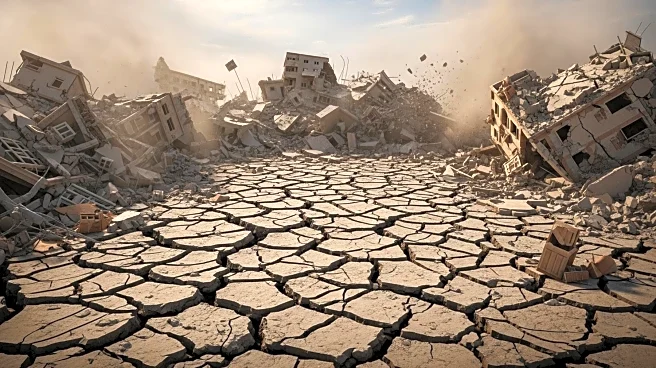What's Happening?
A 6.0-magnitude earthquake struck eastern Afghanistan, primarily affecting the provinces of Nangarhar and Kunar. The earthquake resulted in over 800 deaths, according to the UN, and caused significant destruction in the region. The epicenter was located 16 kilometers from Asadabad, causing widespread fear among residents. Rescue operations are hindered by blocked roads and the remote, mountainous terrain, necessitating the use of helicopters to reach affected areas. Volunteers are actively involved in rescuing trapped individuals, with reports of people dying under rubble while awaiting rescue.
Why It's Important?
The earthquake has highlighted the vulnerabilities of Afghanistan's infrastructure and the challenges faced by the Taliban government in managing disaster response. The remote and mountainous terrain complicates rescue efforts, potentially leading to higher casualties. The international community's involvement in providing aid and support is crucial for the affected families. The disaster underscores the need for improved emergency preparedness and infrastructure development in Afghanistan, which could have long-term implications for the country's stability and recovery.
What's Next?
Rescue operations are expected to continue as the Taliban government and international aid organizations work to reach inaccessible areas. The focus will be on providing immediate relief, including medical assistance and shelter for displaced residents. The international community may increase its support, potentially influencing diplomatic relations with Afghanistan. Long-term recovery efforts will likely involve rebuilding infrastructure and addressing the needs of affected communities.











